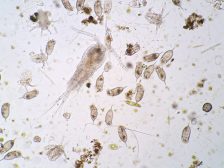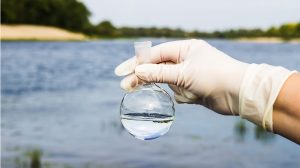Definition
noun
Photosynthetic (plant-like) constituent of plankton, mainly comprised of unicellular algae
Supplement
Plankton pertain to the small organisms that drift, float, or weakly swimming in aquatic habitats. Some of them may be capable of diel vertical migration but they, in general, flow with their surrounding currents. They may be classified according to their trophic level groups: (1) phytoplankton, (2) zooplankton, (3) bacterioplankton, and (4) mycoplankton.
Phytoplankton are the photosynthetic constituent of the plankton. Most of them are algal groups such as diatoms, dinoflagellates and cyanobacteria. They are mostly microscopic and therefore cannot be seen by unaided eye. Nevertheless, they become noticeable when they are present in high numbers since they contain pigments such as chlorophyll and accessory pigments (e.g. xanthophylls and phycobiliproteins). Bright green algal blooms for instance are caused by the rapid increase or accumulation in the population of blue-green algae (cyanobacteria). The red tide phenomenon is another example of algal bloom caused by the rapid growth of dinoflagellates and diatoms giving a red or brown hue in marine waters. An algal bloom caused by phytoplankton is referred to as phytoplankton bloom.
Word origin: Ancient Greek phutón (“plant”) + planktón, (planktós (“wandering”)
Synonym(s):
- microalga
See also:



